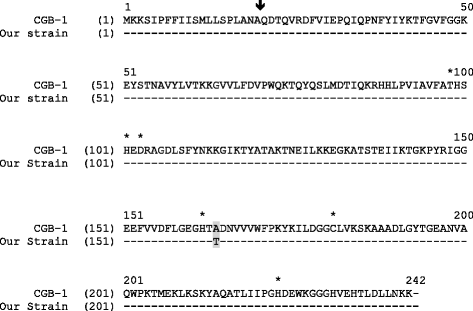Chryseobacterium gleum in a man with prostatectomy in Senegal: a case report and review of the literature
- PMID: 28438192
- PMCID: PMC5402668
- DOI: 10.1186/s13256-017-1269-4
Chryseobacterium gleum in a man with prostatectomy in Senegal: a case report and review of the literature
Abstract
Background: Here we report a rare case of a urinary tract infection due to Chryseobacterium gleum. This widely distributed Gram-negative bacillus is an uncommon human pathogen and is typically associated with health care settings.
Case presentation: We describe a case of urinary tract infection caused by Chryseobacterium gleum in a 68-year-old man of Wolof ethnicity (an ethnic group in Senegal, West Africa) who presented to our Department of Urology in a university teaching hospital (Hôpital Aristide Le Dantec) in Dakar, Senegal, 1 month after prostatectomy. The strain isolated from a urine sample was identified as Chryseobacterium gleum by mass spectrometry (Vitek matrix-assisted laser desorption/ionization, time-of-flight, bioMérieux) and confirmed by 16S ribosomal ribonucleic acid sequencing. The organism was resistant to a wide range of antibiotics, including carbapenem, due to a resident metallo-β-lactamase gene that shared 99% of amino-acid identity with Chryseobacterium gleum class B enzym.
Conclusions: Infection by Chryseobacterium gleum is infrequent, and no such case has been previously reported in Africa. Despite its low virulence, Chryseobacterium gleum should be considered a potential opportunistic and emerging pathogen. Further studies on the epidemiology, pathogenicity, and resistance mechanisms of Chryseobacterium gleum are needed for better diagnosis and management.
Keywords: CGB-1; Chryseobacterium gleum case report; Metallo-β-lactamase; Urinary tract infection; resistance.
Figures

References
-
- Vandamme P, Bernardet J, Segers P, Kersters K, Holmes B. New perspectives in the classification of the flavobacteria: Description of Chryseobacterium gen. nov. Bergeyella gen. nov., and Empedobacter nom. rev. Int J Syst Bacteriol. 1994;44:827–31. doi: 10.1099/00207713-44-4-827. - DOI
-
- Holmes B, Owen RJ, Steigerwalt AG, Brenner DJ. Flavobacterium gleum, a new species found in human clinical specimens. Int J Syst Bacteriol. 1984;34:21–5. doi: 10.1099/00207713-34-1-21. - DOI
-
- Ramya TG, Sabitha B, Pravin D, Geetha R. Chryseobacterium gleum urinary tract infection. Genes Rev. 2015;1(1):1–5. doi: 10.18488/journal.103/2015.1.1/103.1.1.5. - DOI
-
- Dijana VB, Ozrenka Z, Branka B, Vanda P. Chryseobacterium gleum infection in patient with extreme malnutrition and hepatic lesion – case report. Signa Vitae. 2015;10(suppl 1):50–2. doi: 10.22514/SV101.062015.13. - DOI
Publication types
MeSH terms
Substances
LinkOut - more resources
Full Text Sources
Other Literature Sources
Medical
Molecular Biology Databases
Research Materials
Miscellaneous

